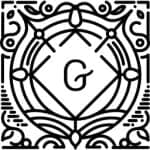
Gutenberg is the name of a modern WordPress editor that was introduced with the release of WordPress 5.0 in December 2018. The editor is named after Johannes Gutenberg, who invented the printing press in the 15th century and revolutionized the way books were printed and distributed.
History
Before Gutenberg, WordPress users relied on a classic editor that was limited in terms of functionality and flexibility. The introduction of Gutenberg marked a major shift in how content is created and published on WordPress websites.
The new editor uses blocks to create content, which allows users to easily add various types of media (such as images, videos, and audio) as well as custom formatting options. This makes it easier for non-technical users to create visually appealing postsA post is a type of content in WordPress, a popular open-source content management system used for creating an... More and pagesIn WordPress, a page is a content type that is used to create non-dynamic pages on a website. Pages are typica... More without having to know how to code.
Features
Some key features of the Gutenberg editor include:
Video Overview
Reception
The introduction of Gutenberg was met with mixed reviews from WordPress users. Some praised its modern design and ease-of-use, while others criticized its lack of backward compatibility with older themesA WordPress theme is a set of files that determine the design and layout of a website. It controls everything ... More and plugins.
Despite these criticisms, however, Gutenberg has become an integral part of the WordPress ecosystem. As more developers embrace block-based editing, we can expect to see even more innovative uses of the editor in the future.
Reverting to the Classic Editor
Users who prefer the classic editor can still use it by installing the Classic Editor plugin, which restores the previous WordPress editor and disables Gutenberg. The pluginA plugin is a software component that adds specific features and functionality to your WordPress website. Esse... More also provides an option for users to switch between editors on a per-post basis. Keep in mind that Gutenberg is constantly improving, so it may be worth exploring its features before deciding whether or not to revert to the classic editor.
